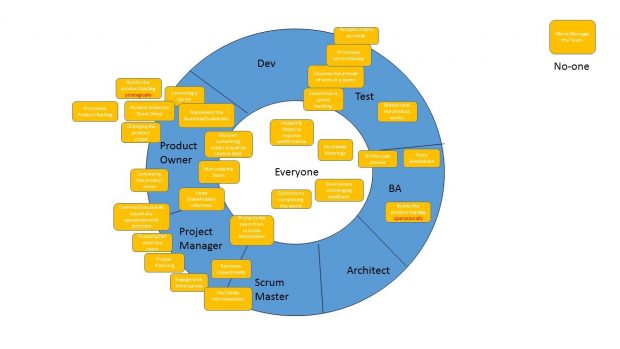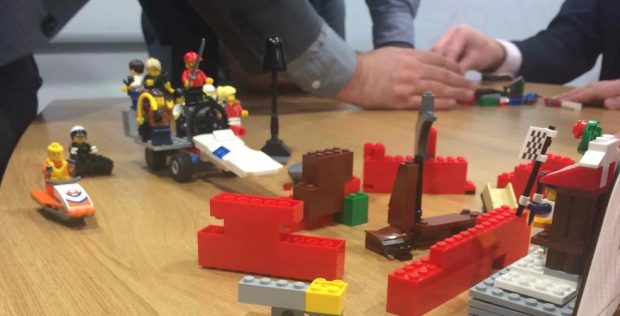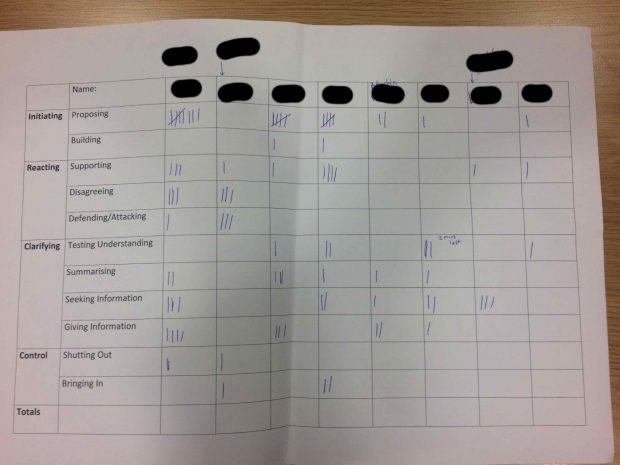In my last post, I explored why managing conflict is essential in Agile teams. Surfacing issues, reaching consensus, and collaboration produce better solutions. It's fundamental for individuals to develop the skills they need to disagree productively. However, recognising and acknowledging what level of conflict exists – before it escalates, can be challenging.
Self-reflection, conflict diagnosis, and empathy are effective techniques to help a team get back on track. In today's post, I'll discuss 2 self-reflection models that can help teams work better together.

Establishing clarity around roles and responsibilities can diffuse tensions within a team. When everyone is clear on what they’re doing, and who is doing it, any discord around personal crusades or competing agendas are more likely to be neutralised.
Challenge: individual goals pulling team apart
To set the stage, let's walk you through a real-world coaching use case. In the example, I'll explore how self-reflection enabled a highly dysfunctional team to move away from competing for personal agendas towards smoother conflict resolution.
On this occasion, I was invited to help a team in a large financial organisation to overcome their differences and learn to work together more effectively. The group included the following members:
User experience/content designer. The role of a UX person is to get the content perfect. If you’re a UX person, you’re focused on creating a highly user-friendly, accessible solution
Tester. A tester strives for solutions with no defects
Developers. A developer wants better code
Project managers. The project manager drives schedules and is focused on delivering more, faster
Despite being assigned to work on one project, sometimes people in a team struggle to work together. Personal objectives, and agendas (or crusades) create conflict. When every member on a team is off pursuing individual goals, it's near impossible to make progress. A team without a shared vision will spend their time and energy arguing. They have nothing to unite them.
Solution: self-reflection techniques
My role as an Agile coach is to pull dysfunctional teams back from the brink of disruption. The first step is to get the team to understand how detrimental their behaviour is. There are different techniques coaches can use to hold up the mirror in self-reflection. Here are 2 effective ways to create the perspective a team needs to move forward.
The Herculean Doughnut
The Herculean Doughnut is a method I like to use to help teams gain insight into their team's dynamic by articulating individual member roles and responsibilities. It's often one of the first things I do with a team. The exercise is a collaborative way to demonstrate the distribution of roles and responsibilities across the group. It answers the question, 'are tasks aligned to the correct roles, misaligned, or missing?'
How to use
First, identify the roles on the team, writing the name of each position within the Herculean Doughnut. In the next step, use pre-prepared sticky notes to describe each role's responsibilities. Pass the sticky notes around the group, and work through each of them, discussing how different responsibilities align with a job role, in other words, who’s doing what.
I always conduct this part of the exercise as a group. In this way, everyone’s allowed to express their view constructively. The conversation begins with me asking everyone where they think 'X' responsibility lies. For example, a person picks a responsibility note up, reads it out loud, then the team discusses where they believe that responsibility belongs. When they agree, someone tacks the note on the board next to the associated role name. When we've exhausted the list, the doughnut represents how the team thinks they should function.
Exposes role gaps and dispels confusion
The point of the exercise is to provide clarity around the roles and responsibilities. As the coach, my role is to facilitate. The activity is a fun way to get everyone's opinion heard while establishing how they think the team should be operating. When the team steps back to look at the completed Herculean Doughnut, any imbalances, gaps, and misconceptions are apparent.

As an example, there might be a project manager in the room who insists a specific responsibility belongs to them. But, the team might see it differently. The doughnut doesn't lie. The process reveals how the team does engage with the project manager. Project managers who want more control will often try to micromanage a team. In a scrum team, this causes conflict. Scrum teams are self-organising. Any attempt to micromanage team members is counter-intuitive.
When a team sits back and stares at the doughnut, holding up the mirror to who is doing what, they can also see what roles are underutilised. When a position on the board appears with no responsibilities, that's a gap. As my example here shows, there’s a role on the team with no responsibilities: the architect isn’t doing anything.
Rackham's Communication Model
Neil Rackham, trained as an experimental psychologist, is famous for his work in applying research disciplines toward understanding and perfecting the dynamics of sales performance. I like to use the principles of Rackham’s communications model to categorise team behaviour. Combining Rackham's communication model with an Agile Lego activity as part of a retro works well.
How to use
Ask the team to create a Lego model representing the last iteration of the team’s project.

During the exercise, secretly observe how the team members engage with each other. To keep a tally, create a scoreboard with columns depicting each person from the team. As the team works together, record their performance, noting how every person engages throughout the activity. The areas to observe include:
- initiating: proposing, building
- reacting: supporting, disagreeing, defending/attacking
- clarifying: testing understanding, summarising, seeking information, giving information
- control: shutting out, bringing in
Provides insight into individual and group behaviour
Cataloguing behaviour in this way is convincing. When the exercise finishes, the team steps back to look at what I observed. It's hard to dispute what's in front of them. Looking at the board, everyone immediately sees how they work with each other on a day to day basis.
People in the room stare at the board and experience an 'ah-ha' moment. Caught up in their work, they aren't aware they spend most of their time defending, attacking, or disagreeing. By stepping back, everyone can see who's opposing more, who's getting shut out, and how some individuals struggle to get into the conversation at all.

When 2 or 3 people dominate discussions, you lose the benefit of the team's collective problem-solving ability. To reach a satisfactory consensus, everyone on the team needs to weigh in. If what's on the board bears this out, talk about it. "Look, half the team are struggling to get involved. One or 2 of you are dominating the situation." When the reality of how a team is working becomes evident, you can then discuss what the team can do to change the behaviour.
Benefits: clarity and insight to move forward
These 2 simple coaching exercises hold up the mirror to the team providing invaluable insight into the ways people and groups operate.
The Rackham Communication Model enables peoples to see what their go-to behaviour traits are and how their actions affect the team.
The Herculean Doughnut provides clarity around roles and responsibilities, dispelling misconceptions, and exposing gaps.
In combination, the 2 methods help to level set a team, identifying the issues causing the conflict. From there, corrective measures can be put in place to address the underlying issues – at both the individual and team levels.
Lack of alignment ends up hurting a team's performance. Time and again during coaching assignments, I see teams stumble (and the organisation suffer) because they are out of sync. In my next blog post, I'll take a closer look at different ways to help teams diagnose conflict and establish healthier ways to disagree.
Stay connected
You can connect with Steve through LinkedIn.
Like this blog? Why not subscribe for more blogs like this? Sign up for email updates whenever new content is posted!
Stay up to date with what’s happening at BPDTS. Connect with us on LinkedIn, and follow us on Twitter.
Leave a comment